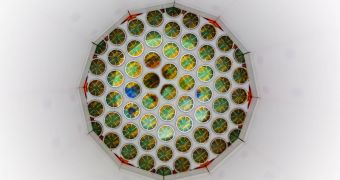Three months of testing have proven insufficient for the new Large Underground Xenon (LUX) detector to find any trace of Large Interactive Massive Particles (WIMPs), the basic elements that physicists believe make up dark matter.
Located under the Black Hills, in South Dakota, this detector is billed as the most sensitive scientific instrument ever developed for detecting the elusive form of matter.
LUX, a 370-kilogram liquid xenon detector, was developed as an alternative to more complex and expensive ultra-cold silicon detectors (UCSD).
The new instrument is 20 times more sensitive than its predecessors, with some experts suggesting that the three candidate low-mass WIMP events recently recorded in some UCSD would have generated more than 1,600 hits in LUX. However, the actual data indicate no sign of such detection.
This detector and its operations are supported by a collaboration between 17 research universities and national laboratories in the United States, the United Kingdom and Portugal.
The Department of Energy and the National Science Foundation provide funding and guidelines for the Deep Underground Science and Engineering Laboratory (DUSEL) and the Lawrence Berkeley National Laboratory (Berkeley Lab), which led these studies.
Dark matter is believed to make up about a quarter of the Universe's mass-energy budget, with the other three quarters accounted for by dark energy, and 4-5 percent by regular, baryonic matter. Finding dark matter would therefore have significant implications on our understanding of both basic physics and the Universe.
Some studies suggest that this form of matter may be composed of WIMPs, particles that interact with regular matter very rarely. Detectors such as LUX are set up to identify such interactions whenever they occur.
With a peak sensitivity that can detect WIMPs weighing 33 GeV/c2, LUX is 20 times better than UCSD and three times more sensitive than any other detector of any type in the world. “LUX is blazing the path to illuminate the nature of dark matter,” say Rick Gaitskell, a physicist at Brown University and a spokesperson for the experiment.
“This is only the beginning for LUX. Now that we understand the instrument and its backgrounds, we will continue to take data, testing for more and more elusive candidates for dark matter,” concludes Yale University physicist Dan McKinsey, also a LUX spokesperson.

 14 DAY TRIAL //
14 DAY TRIAL // 
